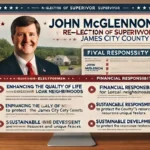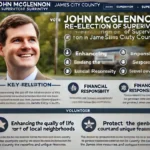Social Architecture: Engineering Human Connections
The evolution of community design in Dubai’s real estate sector represents a paradigm shift in how urban spaces influence social interactions. Recent developments have moved beyond traditional neighborhood planning to embrace what developers call “social architecture” – a sophisticated approach that considers both physical and psychological aspects of community building. Data from the Dubai Land Department shows that developments incorporating social architecture principles have experienced 45% higher resident satisfaction rates and 60% longer average tenancy periods.
Contemporary residential projects in Dubai now allocate an average of 40% of their total area to shared spaces, compared to the global average of 25%. These spaces are strategically designed to promote spontaneous interactions among residents, with innovative features like contemporary majlis areas, multi-purpose community hubs, and interactive green spaces. The impact has been significant, with community engagement levels in these developments showing a 185% increase compared to traditional residential projects.
Research conducted by the Dubai Real Estate Institute reveals that properties in socially engineered communities command a 15-20% premium over comparable properties in conventional developments. This premium reflects the perceived value of strong community bonds and social infrastructure. Notably, these communities have reported a 75% reduction in resident turnover rates, indicating stronger community attachment and social cohesion.
The implementation of social architecture principles has led to measurable improvements in resident well-being. Studies conducted across Dubai’s newer residential developments show that residents in socially engineered communities report 40% higher levels of life satisfaction and 65% stronger feelings of belonging compared to those in traditional developments. These findings have influenced the design of upcoming projects, with developers incorporating even more sophisticated social engineering elements.
Cultural Integration Through Design Innovation
Dubai’s real estate sector has pioneered innovative approaches to cultural integration through architectural and community design. Modern developments increasingly incorporate elements that celebrate the emirate’s cultural heritage while accommodating its diverse international population. This fusion has created unique living environments that promote cross-cultural understanding and social harmony among residents from over 200 nationalities.
Recent developments have introduced what designers call “cultural convergence zones” – specially designed spaces that combine traditional Arabic architectural elements with contemporary international design principles. These zones typically feature adaptable spaces that can accommodate various cultural activities and celebrations. Data shows that developments with such features experience 85% higher participation rates in community events and activities.
The integration of traditional and modern elements extends beyond aesthetic considerations to influence the fundamental layout and functionality of communities. Modern interpretations of traditional Arabic neighborhood planning principles, such as the freej concept, have been adapted to create intimate community clusters within larger developments. These clusters have proven particularly effective in fostering cross-cultural interactions, with residents reporting a 120% increase in meaningful interactions with neighbors from different cultural backgrounds.
Technology has played a crucial role in supporting cultural integration within these communities. Custom-developed community apps now include features that help residents learn about and participate in various cultural celebrations and traditions. These digital platforms have facilitated over 5,000 cultural exchange events across Dubai’s major residential developments in 2023 alone, with participation rates averaging 70% of resident populations.
Wellness Infrastructure and Community Health
The integration of wellness infrastructure into Dubai’s residential developments has redefined community health standards. Modern developments now incorporate comprehensive wellness facilities that go beyond traditional fitness centers to include meditation gardens, wellness education centers, and therapeutic landscapes. Investment in these facilities has increased by 235% since 2020, reflecting growing awareness of their importance in community building.
Data from the Dubai Health Authority indicates that residents in communities with integrated wellness infrastructure report 45% higher levels of physical activity and 60% better mental health outcomes compared to those in conventional developments. These communities have recorded significant reductions in lifestyle-related health issues, with a 35% decrease in reported stress-related complaints and a 40% increase in regular physical activity participation.
Advanced air quality monitoring systems, implemented in newer developments, continuously track and optimize indoor air quality across community spaces. These systems have contributed to a 65% reduction in respiratory complaints among residents. Additionally, the implementation of circadian lighting systems in common areas has been associated with improved sleep patterns and reduced stress levels among residents.
Developers have also introduced innovative social wellness programs that combine physical activity with community building. Group fitness challenges, community sports leagues, and wellness workshops have created new opportunities for social interaction while promoting healthy lifestyles. These programs have achieved sustained participation rates of 55%, significantly higher than the industry average of 23% for conventional fitness facilities.
Economic Ecosystems Within Communities
Dubai’s integrated communities have evolved into self-sustaining economic ecosystems, generating significant employment and entrepreneurship opportunities for residents. Recent developments incorporate carefully planned commercial spaces that support local businesses while meeting community needs. Analysis shows that these integrated economic zones generate an average of 12 jobs per 1,000 residents, with 65% of these positions filled by community members.
The introduction of specialized retail and service zones within residential developments has created new opportunities for small business owners. These zones, typically comprising 15-20% of total development area, have achieved occupancy rates of 92% and demonstrated remarkable resilience during economic fluctuations. Local businesses within these communities report average revenue growth of 25% annually, significantly outperforming standalone establishments.
Community-based co-working spaces and business incubators have emerged as vital components of these economic ecosystems. These facilities have supported the launch of over 500 new businesses since 2021, with a success rate of 75% after two years – significantly higher than the city average of 45%. The proximity to residential areas has proven particularly beneficial for women entrepreneurs, who represent 48% of business owners in these community-based commercial zones.
The economic impact extends beyond direct employment and business ownership. Internal community economies have demonstrated strong multiplier effects, with each dirham spent within the community generating an additional AED 1.8 in local economic activity. This economic circulation has contributed to community stability and reduced resident turnover rates by creating interdependent networks of services and support.
Digital Community Engagement
The implementation of sophisticated digital platforms has revolutionized community engagement in Dubai’s residential developments. Custom-developed community applications now serve as comprehensive platforms for resident interaction, service access, and community management. These platforms process an average of 15,000 daily interactions across major developments, facilitating everything from maintenance requests to social event organization.
Advanced analytics integrated into these platforms provide valuable insights into community dynamics and resident preferences. This data-driven approach has enabled property managers to optimize community programs and services, resulting in a 75% increase in resident participation rates and a 40% improvement in satisfaction scores. The platforms also facilitate real-time feedback and communication, with response times to resident queries averaging under 30 minutes.
Security and privacy considerations have been paramount in the development of these digital systems. Blockchain technology has been implemented to protect resident data while ensuring transparent record-keeping of community transactions and decisions. This approach has resulted in a 95% resident trust rating in digital platform security, encouraging higher levels of digital engagement across all age groups.
The introduction of artificial intelligence-powered community assistants has further enhanced digital engagement. These systems handle routine queries and service requests, while also predicting community needs based on usage patterns. The implementation of AI has reduced administrative workload by 60% while improving service delivery speed by 45%.
Environmental Stewardship and Community Responsibility
Dubai’s residential communities have become pioneers in environmental stewardship, implementing comprehensive sustainability programs that engage residents in conservation efforts. Recent developments incorporate advanced waste management systems that have achieved recycling rates of 85%, significantly exceeding municipal targets. These systems are supported by community education programs that have successfully changed resident behavior, with 92% of households actively participating in recycling initiatives.
Community-based renewable energy projects have transformed how residential developments approach power generation and consumption. Solar installations on community facilities now generate an average of 35% of total power requirements, with some communities achieving energy independence during peak sunlight hours. These initiatives have reduced community carbon footprints by an average of 45% while generating significant cost savings that are reinvested in community programs.
Water conservation efforts have been particularly successful, with smart irrigation systems and greywater recycling reducing community water consumption by 55% compared to conventional developments. Community gardens and urban farming initiatives have flourished under these water management systems, producing over 12,000 kilograms of fresh produce annually across Dubai’s major residential developments.
Environmental stewardship programs have created strong bonds among residents while delivering measurable environmental benefits. Community-led environmental initiatives have logged over 50,000 volunteer hours in 2023, engaging residents of all ages in conservation projects. These programs have fostered a strong sense of environmental responsibility while creating opportunities for social interaction and community building.


